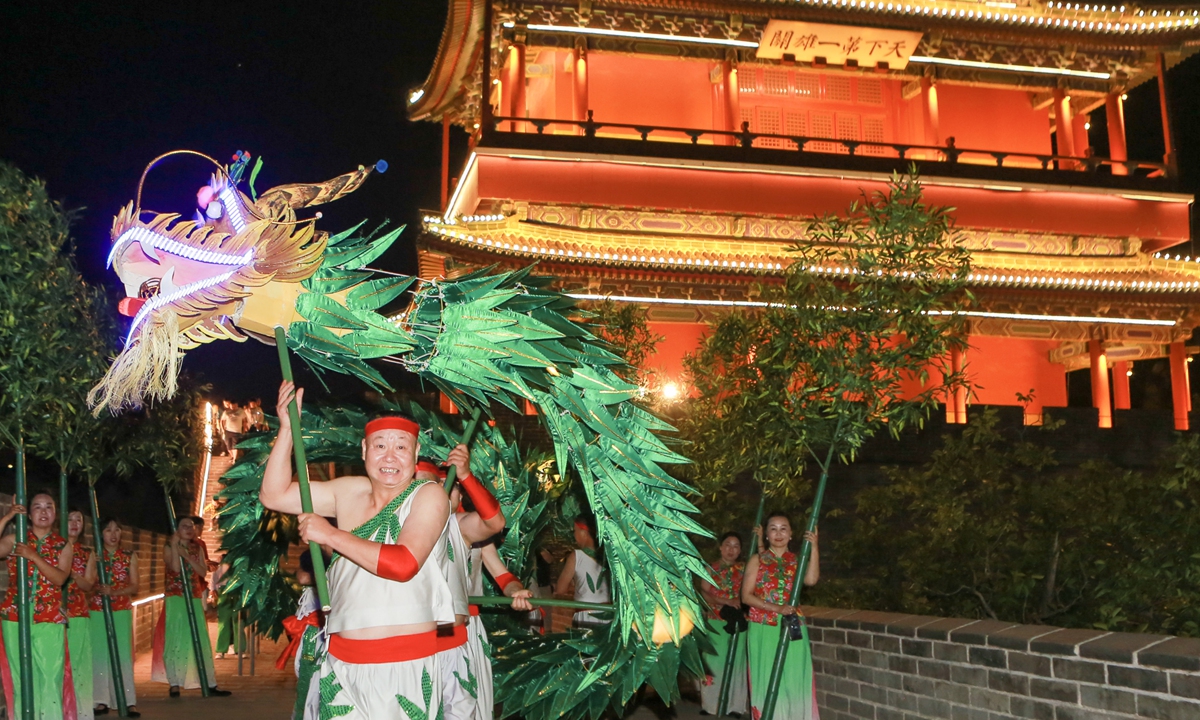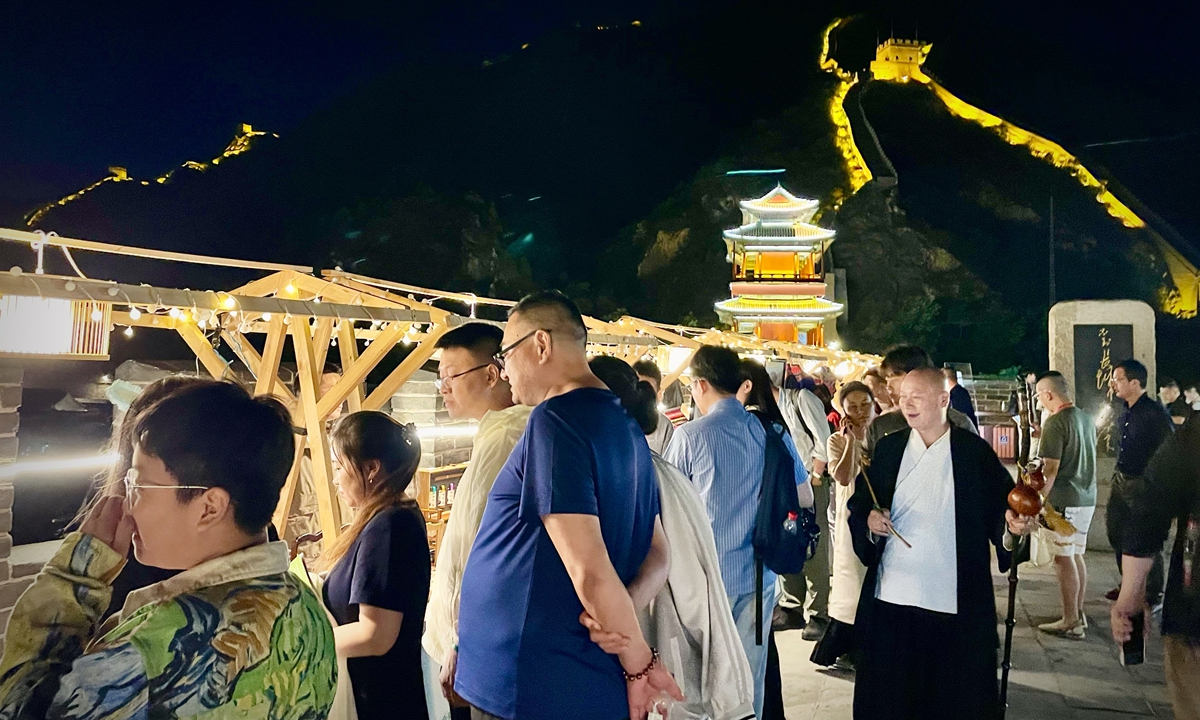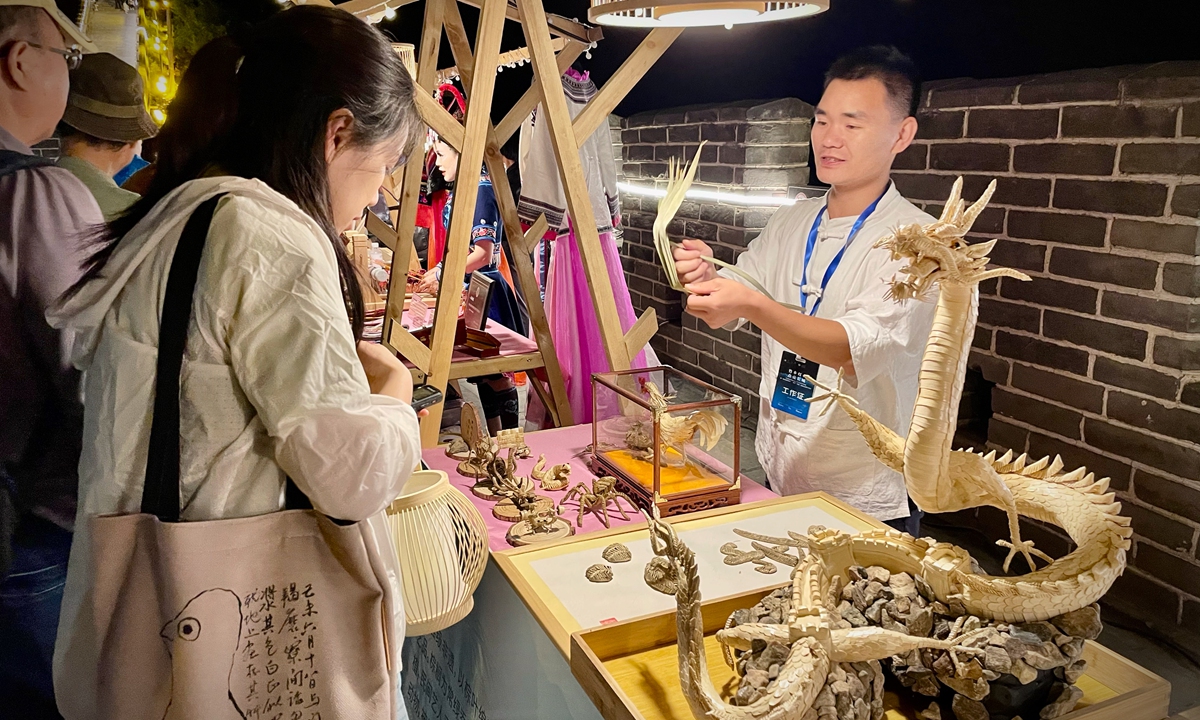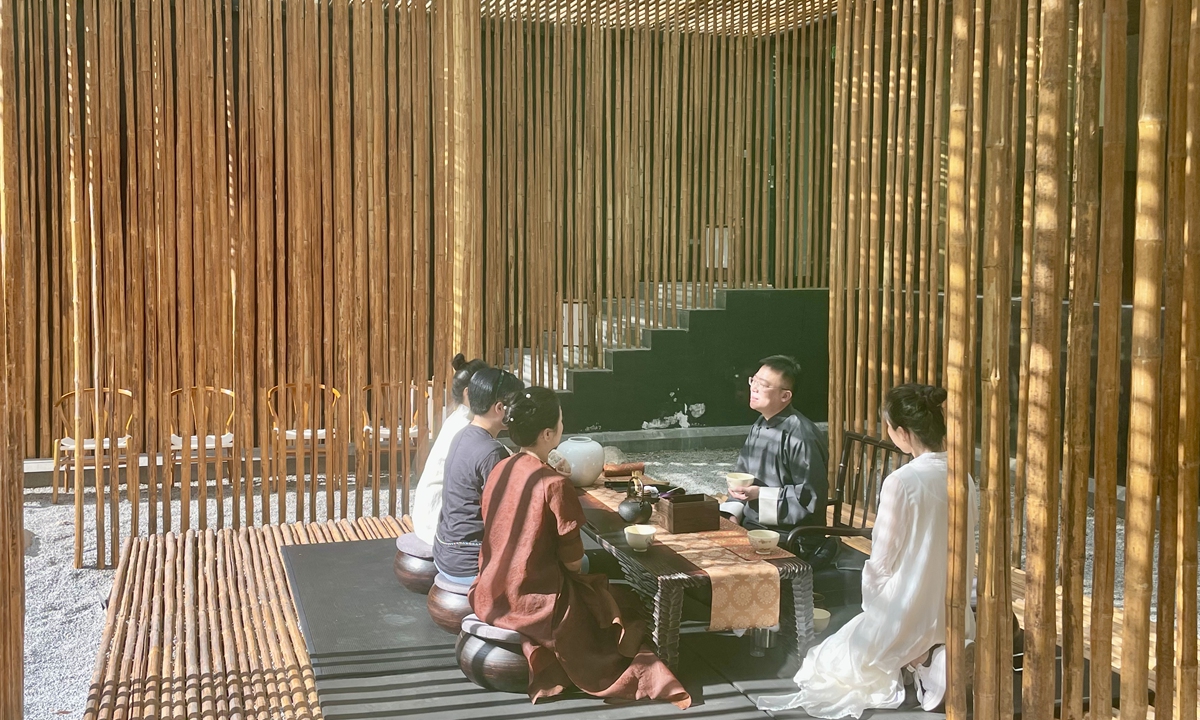ARTS / CULTURE & LEISURE
Anji’s intangible cultural heritage shines at Great Wall

Folk artists from Anji county, Zhejiang Province, perform the bamboo leaf dragon dance at the Juyongguan section of the Great Wall in Beijing on June 2, 2023. Photo: Pan Xuekang
On Friday evening, Anji bamboo lanterns illuminated the Juyongguan section of the Great Wall in Beijing. The two-day exhibition of excellent Chinese folk crafts and the display of Anji folk customs attracted many tourists. The exhibition on the Great wall, which was also a new perfect platform on which to showcase Chinese craftsmen's cultural confidence, further promoted China's intangible folk cultural heritage, said the Anji's non-heritage inheritors.Over the weekend, visitors to the Juyongguan Great Wall could see bamboo-woven bags, bowls, and other creative products, fully demonstrating Anji's practical move to choose bamboo over plastic. On the beacon towers along the Great Wall, many local intangible cultural heritage craftsmen displayed their unique skills.

Visitors enjoy a cultural heritage display at the Great Wall on June 2, 2023. Photo: Lin Xiaoyi/GT
Anji is known as "the No.1 bamboo township in China," the origin of Anji Bai Cha (Anji White Tea) and the largest intangible cultural heritage county in Zhejiang.Back in August 2005, Xi Jinping, then party chief of Zhejiang, first proposed the concept in Anji that "Lucid waters and lush mountains are invaluable assets." In recent years, the county has explored green development that combines eco-friendly concepts and industrial prosperity and uses intangible cultural heritage to inject cultural power into efforts to revitalize rural areas.
Currently, the various intangible cultural heritages in Anji county form an organic and comprehensive system. For example, a bamboo plant can be used to create lanterns, fans, and tea sets, Pan Liming, deputy director of Anji county's Culture, Sports, and Tourism Bureau, told the Global Times, noting that there are already hundreds of intangible cultural heritage workshops in the county that highly integrate cultural attributes of each skill with their industrial attributes.

Visitors enjoy a cultural heritage display at the Great Wall on June 2, 2023. Photo: Lin Xiaoyi/GT
Yan Ronghuo, 66, who has been making tea for 50 years, was delighted to be able to demonstrate his stir-frying tea skills at the Great Wall."In our county, about one-third of the population are engaged in the tea industry. Thanks to promotion by the local government, Anji Bai Cha is becoming more and more popular in the country and even the world, drawing more people to appreciate and savor the unique taste and expert craftsmanship of this tea," he said.
In May, Yan was invited to the Korean-Chinese Cultural Center in Seoul, South Korea to demonstrate his tea-making skills, which were warmly welcomed by the local people.
Also popular overseas are local bamboo handicrafts and bamboo fans.
"Some bamboo producers are able to export about 80 percent of their output annually," Pan revealed.
Zhu Hechun, an inheritor of bamboo weaving, owns and jointly runs a bamboo weaving workshop with more than 10 members that generates an annual income of more than 2 million yuan ($280,000).
In addition to the workshop, Zhu actively responds to local authorities' efforts to introduce intangible cultural heritage into schools by setting up bamboo weaving studios at local primary schools and conducting bamboo-weaving extracurricular classes with other inheritors.
"When I was young, my grandmother often told me that if I didn't learn the skill, in the future there would be no one left in the village who could weave ribbons," Tu Guojia, the inheritor of the She ethnic group's ribbon-weaving technique, told the Global Times.
At present, Tu has made ribbon weaving a business in the village, helping local women pass on their ethnic skills and increase their incomes.
Tu said the reputation of the Great Wall is a good opportunity for Anji's tourism, high-quality handicraft products, and folk culture to receive greater exposure, which will further promote the development of the local cultural and tourism industry.

Visitors experience the art of Anji Bai Cha at the tea house by the Great Wall, on June 2, 2023. Photo: Lin Xiaoyi/GT

